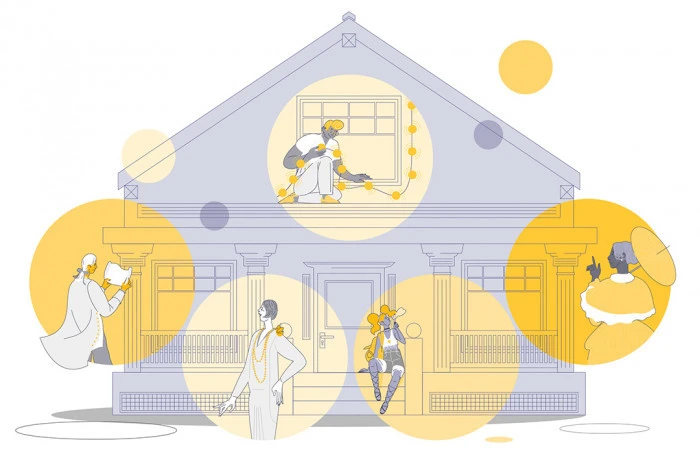Share what you know,
and discover more.
Share what you know,
and discover more.
Oct 14, 1971

-

- Charmaine Bantugan
Samuel Freeman House - National Register of Historic Places
Statement of Significance: One of four textile block houses designed by Frank Lloyd. Wright the early l920s for Southern California, of wide interest to architects and historians because they are unique in Wright's work. They come out of a Wright period characterized by surface and applied ornament, beginning with the 1914 Midway Gardens, Chicago and lasting through the textile block houses. Wright at the time was preoccupied with "common" materials — the lava stone of Japan which was "underfoot," and which he used for the Imperial Hotel, Tokyo (1916-1922); concrete block, a "gutter" material, as he called it, and he proposed to lift it from the gutter and make of it a noble material, The Barnsdall house, Los Angeles (1916-1922) and the four textile block houses derive their in sloping walls and the character of their omanent from Mayan temples in Yucatan; the overall textile effect of the concrete block cast in an ornamental pattern is similar to the overall decoration of the limestone blocks of the Baroque Period of Mayan architecture (Palace of Masks, near Uxmal), Wright conceived these four houses as expressions of the semi-arid climate of Southern California, each of the four has a different motif, drawn from nature, carried out (along with Mayan motifs) throughout the houses. The houses represent a variation on a structural theme that offers an insight into the creative process of America's foremost genius in the field of architecture.
Samuel Freeman House - National Register of Historic Places
Statement of Significance: One of four textile block houses designed by Frank Lloyd. Wright the early l920s for Southern California, of wide interest to architects and historians because they are unique in Wright's work. They come out of a Wright period characterized by surface and applied ornament, beginning with the 1914 Midway Gardens, Chicago and lasting through the textile block houses. Wright at the time was preoccupied with "common" materials — the lava stone of Japan which was "underfoot," and which he used for the Imperial Hotel, Tokyo (1916-1922); concrete block, a "gutter" material, as he called it, and he proposed to lift it from the gutter and make of it a noble material, The Barnsdall house, Los Angeles (1916-1922) and the four textile block houses derive their in sloping walls and the character of their omanent from Mayan temples in Yucatan; the overall textile effect of the concrete block cast in an ornamental pattern is similar to the overall decoration of the limestone blocks of the Baroque Period of Mayan architecture (Palace of Masks, near Uxmal), Wright conceived these four houses as expressions of the semi-arid climate of Southern California, each of the four has a different motif, drawn from nature, carried out (along with Mayan motifs) throughout the houses. The houses represent a variation on a structural theme that offers an insight into the creative process of America's foremost genius in the field of architecture.
Oct 14, 1971
Samuel Freeman House - National Register of Historic Places
Statement of Significance:One of four textile block houses designed by Frank Lloyd. Wright the early l920s for Southern California, of wide interest to architects and historians because they are unique in Wright's work. They come out of a Wright period characterized by surface and applied ornament, beginning with the 1914 Midway Gardens, Chicago and lasting through the textile block houses. Wright at the time was preoccupied with "common" materials — the lava stone of Japan which was "underfoot," and which he used for the Imperial Hotel, Tokyo (1916-1922); concrete block, a "gutter" material, as he called it, and he proposed to lift it from the gutter and make of it a noble material,
The Barnsdall house, Los Angeles (1916-1922) and the four textile block houses derive their in sloping walls and the character of their omanent from Mayan temples in Yucatan; the overall textile effect of the concrete block cast in an ornamental pattern is similar to the overall decoration of the limestone blocks of the Baroque Period of Mayan architecture (Palace of Masks, near Uxmal),
Wright conceived these four houses as expressions of the semi-arid climate of Southern California, each of the four has a different motif, drawn from nature, carried out (along with Mayan motifs) throughout the houses. The houses represent a variation on a structural theme that offers an insight into the creative process of America's foremost genius in the field of architecture.
Posted Date
Mar 15, 2022
Historical Record Date
Oct 14, 1971
Source Name
United States Department of Interior - National Park Service
Source Website
Delete Story
Are you sure you want to delete this story?











